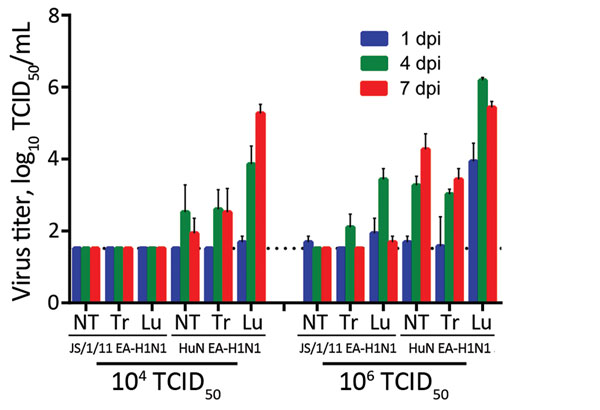Reassortant Eurasian Avian-Like Influenza A(H1N1) Virus from a Severely Ill Child, Hunan Province, China, 2015
Wenfei Zhu
1, Hong Zhang
1, Xingyu Xiang
1, Lili Zhong, Lei Yang, Junfeng Guo, Yiran Xie, Fangcai Li, Zhihong Deng, Hong Feng, Yiwei Huang, Shixiong Hu, Xin Xu, Xiaohui Zou, Xiaodan Li, Tian Bai, Yongkun Chen, Zi Li, Junhua Li

, and Yuelong Shu

Author affiliations: National Institute for Viral Disease Control and Prevention, Chinese Center for Disease Control and Prevention, Beijing, China (W. Zhu, L. Yang, J. Guo, Y. Xie, X. Zou, X. Li, T. Bai, Y. Chen, Z. Li, Y. Shu); Key Laboratory for Medical Virology, National Health and Family Planning Commission, Beijing (W. Zhu, L. Yang, J. Guo, Y. Xie, X. Zou, X. Li, T. Bai, Y. Chen, Z. Li, Y. Shu); Hunan Provincial Center for Disease Control and Prevention, Changsha, China (H. Zhang, X. Xiang, F. Li, Z. Deng, Y. Huang, S. Hu, J. Li); Hunan Provincial People’s Hospital, Changsha (L. Zhong); Liuyang Center for Disease Control and Prevention, Liuyang, China (H. Feng, X. Xu)
Main Article
Figure 4

Figure 4. Replication of Eurasian avian-like influenza A/Jiangsu/1/2011 (JS/1/11 EA-H1N1) virus and Eurasian avian-like influenza A/Hunan/42443/2015 (HuN EA-H1N1) virus in the respiratory tracts of C57BL/6 mice. Eight- to ten-week-old female mice (3/group/time point) were inoculated intranasally with 50 μL of PBS containing 104 or 106 TCID50 of JS/1/11 EA-H1N1 or HuN EA-H1N1 virus. Mice from each group were euthanized at 1, 4, and 7 days postinoculation (dpi). Tissues from each animal were homogenized in 1 mL of PBS and then clarified by centrifugation, and virus titers in the supernatant were determined by TCID50 assay using MDCK cells. Results are the mean ± SD. NT, nasal turbinate; Tr, trachea; Lu, lung; TCID50, 50% tissue culture infectious dose. Dotted horizontal line indicates the detection limit.
Main Article
Page created: October 18, 2016
Page updated: October 18, 2016
Page reviewed: October 18, 2016
The conclusions, findings, and opinions expressed by authors contributing to this journal do not necessarily reflect the official position of the U.S. Department of Health and Human Services, the Public Health Service, the Centers for Disease Control and Prevention, or the authors' affiliated institutions. Use of trade names is for identification only and does not imply endorsement by any of the groups named above.
